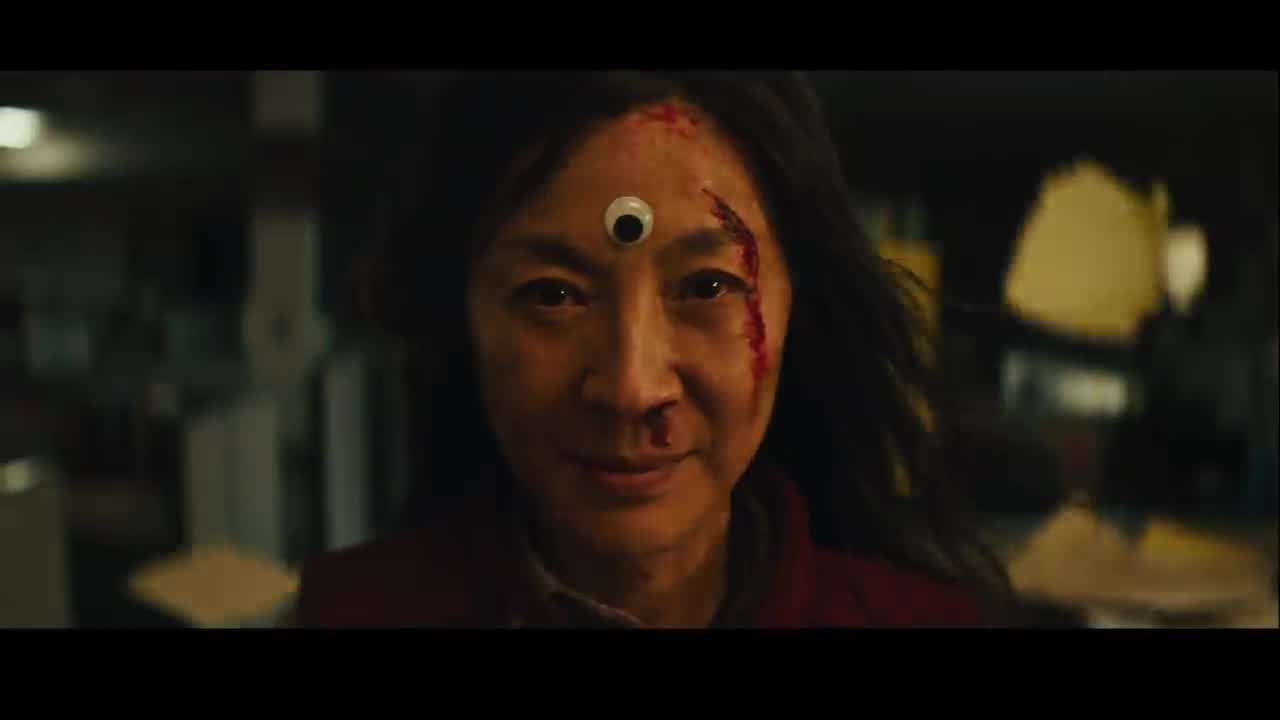The power of “why not?” in Everything Everywhere All At Once

There are few things rarer than a film that fundamentally changes the way we think of cinema.
The potential abstract themes and art in the medium was not fully realized until audiences witnessed the fantastical work of George Méliès in A Trip to the Moon (1902).
The versatility of cinematography and how effectively it could be used to tell a story weren’t truly understood until Citizen Kane (1941). Pulp Fiction (1994) challenged genre and dialogue in a revolutionary way. Films like these ascend beyond simply being great pieces of art, they become fundamental to the history of cinema and are essential viewings. This year we have been graced with one more such film; Everything Everywhere All at Once (2022). While it may be early to say, it is likely that it too will influence cinema for decades to come.
Everything Everywhere All at Once (EEAAO) may be the most creative film I’ve ever seen. After walking out of the theatre my friends and I all felt a unique kind of disappointment because we felt that the film was too creative and inventive.
Every other film would be a letdown afterward. It’s like being at an amusement park and getting on the most exciting roller coaster in the world. Every other rollercoaster would be dull by comparison.
What makes EEAAO a great movie, is that it asks simply “Why not?” There is no concept too outlandish, no visual choice too flamboyant, no stylistic decision out of bounds.
Despite being a studio production, it has the indie movie quality of allowing a tidal wave of creative ideas to flow and this is what makes the film stand apart. The people who made this film did whatever they wanted, not imposing any restrictions on themselves and the film reflects this freedom.
Also impressive is how the film manages to succeed despite it seeming to contradict itself at every turn. It covers colossal subjects like the meaning of life with the same ease and elegance as it covers the modest subject of family dissension. In a lesser film, these topics would be jammed down the audience’s throat (it is admittedly difficult to do otherwise), in EEAAO this is never the case. The plot concerns the fate of multiple universes and yet the film never takes itself too seriously with tension-filled moments constantly being broken up by absurdist comedy.
One of the stars is Ke Huy Quan, an actor who is best known for playing the “mildly” racist character, Short Round, in The Temple of Doom (1984). Then in this film, out of nowhere, he puts on a passionate star-making performance and becomes the movie’s heart and soul.
This is all I’ll say about the film itself. Don’t watch any trailers, don’t look up any reviews (except this one of course heh heh) just go out and see it ASAP.
Aside from the immaculate creativity and ingenious filmmaking on display, what makes EEAAO so special is the climate it was released in and its subsequent reception. Despite everything that blew my mind while watching the film, the most surprising thing about it was that I watched it in a multiplex theatre. This is the type of film normally one would have to hike to some indie theatre to see or be forced to pirate it off some sketchy site.
Instead, it’s just there, at Cineplex, one of the most incredible movies of the decade. Now normally, this would be the part where general audiences hate it but they don’t. The last time I can remember such a bizarre movie getting so much appreciation from general audiences was Being John Malkovich (1999). The general audience gave a Rotten Tomatoes score of 89% fresh rating (which is ridiculously good). An 8.2 on IMDB and an 81% rating have all amounted to a very warm general reception. The box office numbers for EEAAO have been astounding; $92 million worldwide which nearly quadruples the film’s budget, now officially being A24’s highest-grossing movie ever.
Film executives, if nothing else, like money. They’re going to take notice of EEAAO and they are going to try to capitalize on that success. This is why EEAAO is so important; it is going to change the thought process behind movies. Whether this is a good or a bad thing remains to be seen. If executives believe that the film was a success because it has a multiverse, philosophical elements, or because it’s weird, the films they make in response will be flops. However, if they understand that the reason that this film became successful was because the people involved with its creation asked “why not?” and did their own thing, then the future of mainstream filmmaking is bright indeed

